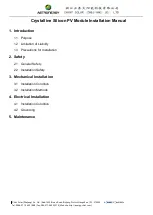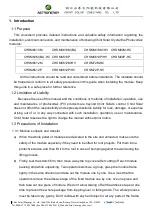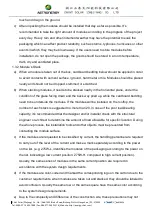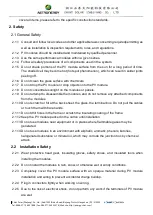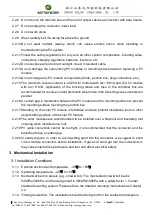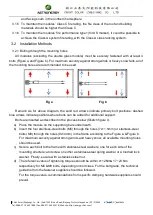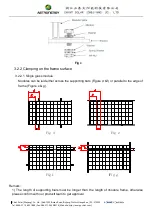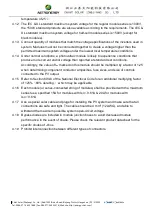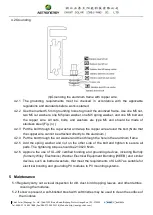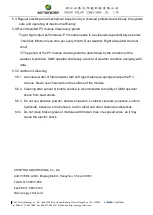
Chint Solar (Zhejiang) Co., Ltd. | Add:1335 Bin´an Road, Binjiang District, Hangzhou | P.C: 310053
Tel: 0086-571-5603 1888 | Fax: 086-571-5603 2316 | Website: http://energy.chint.com/
and facing south in the northern hemisphere.
3.1.5 To maintain the modules’ Class C fire rating, the fire class of the roof and building
materials should be higher than Class C.
3.1.6 To maintain the modules’ fire performance type 1(for US market), it could be possible to
achieve the Class A system fire rating, with the Class A class racking system.
3.2 Installation Methods
3.2.1 Bolting through the mounting holes
All modules (excluding the double glass module) must be securely fastened with at least 4
bolts (Figure a and Figure b). For maximum security against strong winds or heavy snow falls, all of
the mounting holes are recommended to be used.
Fig a
Fig b
Remark: As for above diagram, the solid red arrows indicate primary bolt positions; dashed
blue arrows indicate positions where bolts can be added for additional support.
Bolts are inserted as described in the process below (Sketch figure c).
a) Place the module on the supporting bars underneath.
b) Insert the four stainless-steel bolts (M6) through the holes (7x11.5mm) or stainless-steel
bolts (M8) through the holes (9x14mm) in the frame according to the Figure a & Figure b.
For maximum security against strong winds and heavy snow, all available mounting holes
should be used.
c) Secure each bolt to the frame with stainless-steel washers, one for each side of the
mounting structure; and screw on either a stainless-steel spring washer or a toothed lock
washer. Finally, secure with a stainless steel nut.
d) The reference value of tightening torques should be within 9~12Nm& 17~23 Nm
respectively for M6 &M8 bolts, depending on bolt class. For the bolt grade, the technical
guideline from the fastener suppliers should be followed.
For the torque value, recommendations from specific clamping hardware suppliers should
prevail.

